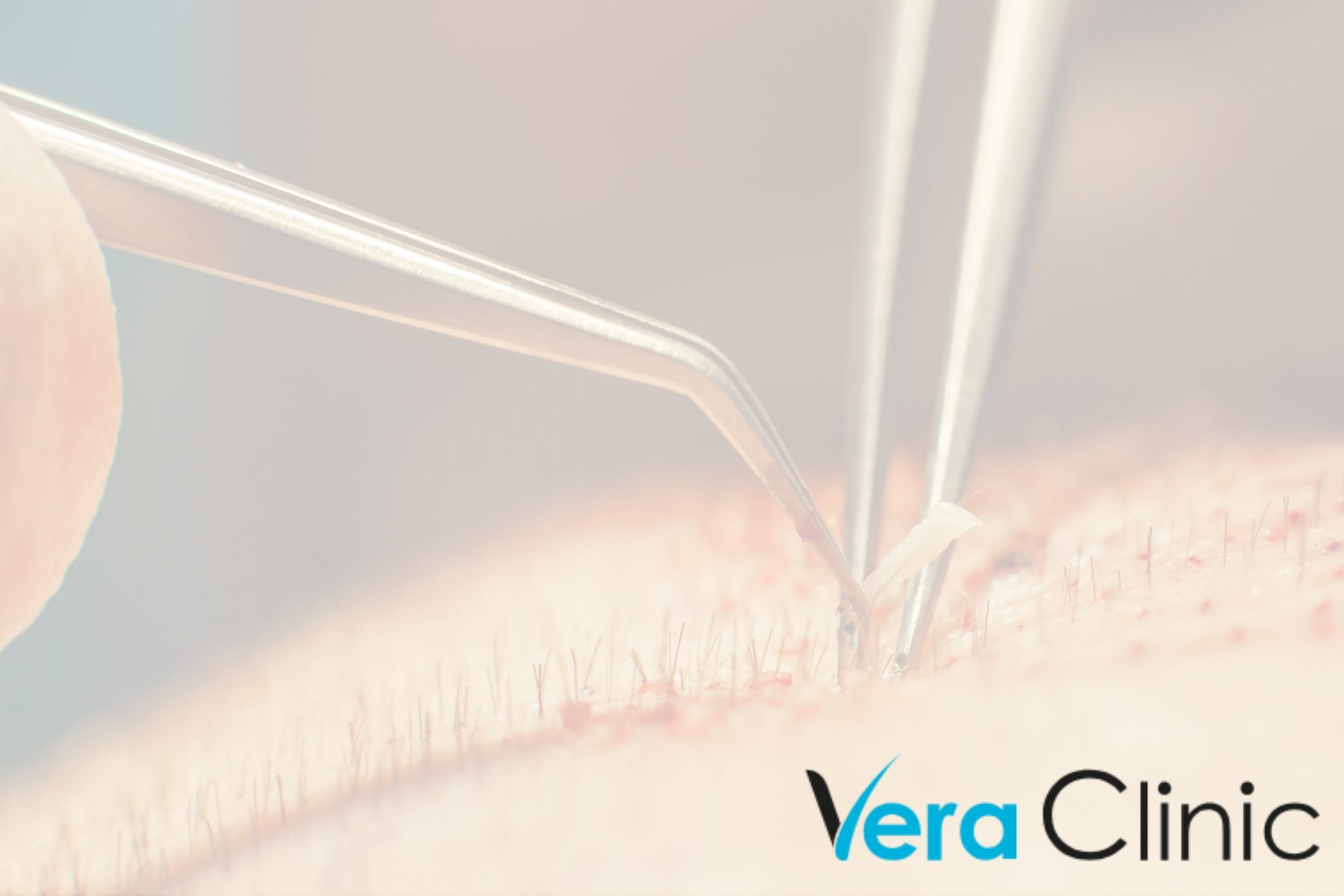Hair transplant surgery has emerged as a popular option for individuals seeking to restore their hair and regain their confidence. This procedure involves the transplantation of hair follicles from a donor site to areas where hair loss has occurred or thinned out. With advancements in medical technology, hair transplant has become a safe and effective solution for those experiencing hair loss.
However, before embarking on a hair transplant journey, it is crucial to consider the cost associated with this procedure. While many focus solely on the aesthetic benefits of the surgery, understanding the financial implications is equally important. Hair transplant cost varies based on the extent of hair loss, the number of grafts required, and the surgical techniques used.
Taking into account the cost of a hair transplant ensures that individuals are financially prepared for the procedure. Moreover, being aware of the cost allows people to carefully assess their budget and explore financing options, if required, to make an informed decision.
Factors that Affect Hair Transplant Cost
The cost of a hair transplant procedure can vary widely depending on several factors. These factors can include the extent of hair loss or baldness, the type of transplant technique used, the qualifications and experience of the surgeon, the location of the clinic or hospital, and additional services or procedures that may be required. Understanding these various factors that affect hair transplant cost is essential for anyone considering this surgical procedure. By examining these elements, individuals can have a better understanding of what to expect in terms of pricing and make more informed decisions regarding their hair transplant options.
1. Type of Procedure
There are two main types of procedures used in hair transplant surgery: Follicular Unit Extraction (FUE) and Direct Hair Implantation (DHI). Both procedures involve transplanting hair follicles from one part of the body (called the donor area) to the bald or thinning areas of the scalp.
In FUE, the first step is to shave the donor area. Then, individual hair follicles are extracted using a punch tool that is less than 1mm in diameter. These follicles are harvested in a random pattern, leaving tiny circular scars that are virtually invisible. Once the follicles are extracted, they are carefully implanted into the recipient area using micro-incisions. This process can take several hours, depending on the number of follicles being transplanted.
DHI, on the other hand, involves a more advanced technique. The procedure starts with shaving the donor area and extracting the hair follicles using a specialized tool called a Choi pen. The Choi pen has a hollow needle attached to it, which allows for direct implantation of the follicles without the need for creating incisions beforehand. This not only reduces the procedure time but also minimizes trauma to the hair follicles. The Choi pen also enables precise control over the angle, direction, and depth of the implanted hair follicles, resulting in a more natural-looking outcome.
FUE vs. FUT: Differences in Pricing
The pricing for FUE (Follicular Unit Extraction) and FUT (Follicular Unit Transplantation) procedures can vary significantly due to several factors. FUE is generally more expensive compared to FUT.
One of the main reasons for the price difference is that FUE is a more time-consuming and labor-intensive procedure. FUE involves individually extracting hair follicles from the donor area, whereas FUT involves removing a strip of scalp from the donor area and then dissecting it into grafts. The precision and meticulousness required in FUE demand more effort, leading to higher costs.
Furthermore, the equipment used in FUE procedures is usually more advanced and specialized, contributing to the increased pricing. FUT, on the other hand, requires less sophisticated tools.
Additionally, the expertise and skill level of the surgeon performing the procedure can influence the price discrepancy. FUE requires a surgeon with specialized training and experience in this technique, making their services more in-demand and subsequently more expensive.
It is essential to consider the number of grafts required for each procedure. FUE typically requires a higher number of grafts, leading to higher costs. The precise estimation of grafts needed can affect the overall pricing.
Sapphire FUE: Premium Option with Higher Cost
The Sapphire FUE hair transplant technique is a premium option for individuals seeking natural-looking, long-lasting results. This innovative procedure distinguishes itself through the use of sapphire blades for precise incisions, resulting in a more refined and natural-looking hairline.
The key feature of the Sapphire FUE technique is the utilization of sapphire blades, which are known for their hardness and smoothness. These blades allow the surgeon to create tiny, precise incisions in the donor and recipient areas, ensuring the utmost accuracy in graft placement. This precision results in a more natural-looking hairline, with hair grafts that closely mimic the pattern and direction of existing hair growth.
In addition to the precise incisions, another significant benefit of the Sapphire FUE technique is reduced scarring. The use of sapphire blades minimizes tissue trauma, leading to decreased scarring and a more rapid healing process. This is particularly appealing for individuals concerned about visible scarring after the procedure.
Furthermore, the Sapphire FUE technique offers a faster recovery time compared to traditional hair transplant methods. The precise incisions and reduced tissue trauma result in less swelling, discomfort, and downtime. Patients can expect to resume their normal activities sooner, without the need for an extended recovery period.
Lastly, a unique advantage of the Sapphire FUE technique is the option for both shaved and unshaven applications. This means that patients who prefer to keep their existing hair longer can still undergo a successful hair transplant without having to shave their entire head.
It is essential to note that while the Sapphire FUE technique offers these exceptional features and benefits, it is considered a premium option with a higher cost compared to conventional hair transplant procedures.
2. Number of Grafts Needed
The number of grafts needed for hair transplantation can vary depending on several factors. Firstly, the size of the recipient zone plays a vital role in determining the number of grafts required. The larger the area that needs to be covered, the more grafts will be needed to achieve the desired results.
Another factor to consider is the natural appearance of the patient’s hair. Each individual has a unique hair density, texture, and color. If the patient has thick, luscious hair, fewer grafts may be needed to achieve a natural-looking result. On the other hand, if the patient has thin or fine hair, more grafts may be required to create a fuller and denser appearance.
The current density of follicles in the recipient zone is also a crucial factor. If the patient has a low density of existing hair follicles, more grafts will be necessary to achieve a satisfactory level of coverage. Alternatively, if the patient has a higher density of follicles, fewer grafts may be needed.
On average, Follicular Unit Extraction (FUE) transplantation typically requires around 4,000 grafts to cover the front, middle zones, and crown of the scalp. However, it is essential to note that the exact number of grafts needed can vary based on individual factors and the desired outcome.
How the Number of Grafts Affects the Overall Cost
The number of grafts needed for a hair transplant is a significant factor that directly impacts the overall cost of the procedure. Grafts refer to the individual units of hair follicles that are extracted from the donor area and transplanted into the recipient area.
The more grafts required, the higher the overall cost becomes. This is because more grafts imply a greater amount of hair follicles to be extracted and transplanted, which requires more time and labor from the surgical team. Additionally, the cost also includes the expertise and skill of the surgeon, as they need to carefully extract and transplant each individual graft.
Advanced hair loss and the extent of coverage needed greatly determine the number of grafts required. Patients with advanced hair loss often have a larger bald area, necessitating a higher number of grafts to achieve satisfactory coverage. The extent of coverage needed also plays a vital role, as a larger area will require more grafts for a fuller and natural result.
Several factors determine the number of grafts needed. These include the current baldness level, the desired hair density, and the availability of donor hair. Higher baldness levels usually require more grafts to provide sufficient coverage. Similarly, if a patient desires higher hair density, more grafts will be necessary. The availability of donor hair, which is the hair that is harvested from the back or sides of the head, also affects the number of grafts, as a limited supply of donor hair may limit the number of grafts that can be transplanted.
On average, the range of graft transplantation in hair transplant techniques can vary from 1000 to 4000 grafts. The specific number of grafts needed for an individual patient is determined through consultation with the surgeon, who evaluates the patient’s unique hair loss condition and desired outcomes.
Consultation Process to Determine Graft Count
During a consultation process with hair transplant specialists, determining the number of grafts needed for transplantation involves a thorough examination of the scalp and consideration of various factors. An experienced doctor is essential in ensuring accurate evaluation and appropriate graft count.
To begin, the doctor will carefully examine the scalp to assess the overall condition and identify areas with hair loss or thinning. They will consider the size of the recipient zone, which refers to the area where hair transplantation will take place. This helps determine the extent of the transplant and the number of grafts required.
Additionally, the doctor will assess the thickness and texture of the patient’s hair. Thick hair generally provides better coverage and may require fewer grafts compared to thin hair. The doctor will also evaluate the density of hair follicles in the donor area, which refers to the region where hair is harvested for transplantation. Higher follicle density allows for a greater number of grafts to be extracted and transplanted.
Considering these factors, the doctor will recommend the appropriate number of grafts needed for transplantation. This number may vary depending on the individual’s unique characteristics and desired outcome.
It is crucial to consult with an experienced doctor for accurate evaluation and graft count determination. Their expertise and knowledge in the field of hair transplantation ensure a thorough assessment of the scalp’s condition, precise calculations of graft requirements, and optimal outcomes for the patient. This consultation process helps set realistic expectations and ensures successful results for individuals seeking hair transplantation.
3. Surgeon Experience and Reputation
When considering a surgical procedure, one crucial factor to consider is the surgeon’s experience and reputation. The impact of a surgeon’s experience on pricing can be significant. Generally, the more experienced a surgeon is, the more they can demand for their services. This is because experienced surgeons have a track record of successful surgeries and have likely encountered a wide range of complications, which allows them to better navigate potential risks. As a result, patients may be willing to pay a premium for the expertise and peace of mind that comes with a highly skilled surgeon.
To ensure the best outcome, it is essential to research reputable clinics and skilled surgeons. Reputable clinics are known for their adherence to stringent medical standards, employing highly trained and skilled surgeons. Checking the credentials and qualifications of the surgeon is crucial, as it provides insight into their education, training, certifications, and specialties. Additionally, reading reviews and testimonials from past patients can provide valuable feedback on the surgeon’s reputation and patient satisfaction.
4. Location of Clinic
One of the reasons why Turkey is a popular destination for hair transplants is the location of the clinics. Turkey is strategically located between Europe and Asia, making it easily accessible for patients from both continents and beyond.
The country has developed a reputation for offering high-quality and affordable hair transplant procedures. In recent years, Turkey has witnessed a significant increase in the number of specialized clinics that cater to international patients seeking hair restoration treatments.
Moreover, the location of the clinics in major cities like Istanbul and Ankara adds to their appeal. These cities have well-developed infrastructure, including modern hospitals and advanced medical facilities, providing a comfortable and convenient environment for patients undergoing hair transplant surgeries.
Another advantage of the location of clinics in Turkey is the presence of experienced surgeons and medical staff. Turkish doctors have gained recognition for their expertise in hair transplantation, and many of them have received training and education from prominent institutions in Europe and the United States.
5. Additional Services Included
Additional services included in the hair transplant procedure encompass post-operative care and follow-up appointments, as well as travel arrangements and accommodation packages. Taking into consideration the importance of proper aftercare, these additional services are designed to ensure optimal results and a seamless experience for the patient.
Following the surgical hair transplant procedure, patients are provided with detailed instructions on how to care for their newly transplanted hair. These post-operative care guidelines encompass proper cleansing and grooming techniques, as well as the application of specific medications to aid in the healing process. Additionally, patients are advised on how to minimize potential discomfort and manage any potential side effects that may arise after the surgery.
Moreover, follow-up appointments are an integral part of the hair transplant journey. These appointments allow the surgeon to assess the progress of the hair growth and ensure that the patient is healing as expected. During these visits, the surgeon may make adjustments to the patient’s treatment plan if necessary and address any concerns or questions the patient may have.
6. Technology and Equipment Used
When it comes to hair transplant procedures, technology and equipment play a crucial role in ensuring the best possible results. Advances in technology have brought about the introduction of robotic hair transplant systems, revolutionizing the field and offering more precise and efficient procedures.
Robotic hair transplant systems, such as the ARTAS system, utilize artificial intelligence and sophisticated algorithms to identify and extract healthy hair follicles from the donor area with precision and minimal scarring. These systems also have the ability to create recipient sites in the balding area with accuracy, ensuring proper hair placement and natural-looking results. By automating many aspects of the procedure, robotic hair transplant systems reduce the risk of human error and provide consistent outcomes.
However, it’s important to note that clinics equipped with state-of-the-art technology and robotic hair transplant systems often come at a higher cost. The investment required to acquire and maintain such advanced equipment is substantial, leading to higher prices for patients seeking treatment at these clinics. However, this higher cost is often justified by the superior results achieved through the use of advanced technology.
7. Clinic Facilities and Amenities
When it comes to choosing a clinic, one factor that patients often consider is the facilities and amenities offered. Clinics can range from standard facilities to those with upscale amenities, each catering to different needs and preferences.
Standard facilities typically offer the basic necessities required for medical care. These may include well-equipped examination rooms, waiting areas, and clean and hygienic environments. While such facilities may lack the luxurious appeal of upscale amenities, they still provide a functional and efficient environment for patients to seek medical treatment.
On the other hand, luxury clinics with premium services often come with a higher price tag. These clinics go the extra mile to provide patients with a more comfortable and luxurious experience. Upscale amenities can include spacious and elegantly furnished waiting areas, private consultation rooms, and state-of-the-art medical equipment. Some luxury clinics may even offer additional services such as concierge services, complementary refreshments, and personalized attention from the medical staff.
The choice between standard facilities and upscale amenities ultimately depends on the individual’s preferences, needs, and budget. While some patients prioritize the medical expertise and affordability of standard facilities, others may prefer the added comfort and premium services offered by luxury clinics.
8 . Overall Package Inclusions
When comparing hair transplant Turkey package deals, it is important to consider the overall package inclusions to ensure the best value for money. The cost of the procedure may include additional services such as transportation, accommodation, and aftercare.
Transportation is a key factor to consider when evaluating hair transplant package deals. Some packages may include airport transfers and transportation to and from the clinic, which can save you time and money. It is important to check if these services are included and whether they meet your needs.
Accommodation is another aspect to consider. Many package deals include accommodation options in their cost. This can range from staying in a hotel near the clinic to being provided with a dedicated recovery villa. It is essential to understand the type of accommodation provided and if it aligns with your preferences and comfort.
Aftercare is also an important inclusion in hair transplant package deals. This may involve post-operative care, follow-up appointments, and even the cost of any necessary medication. Understanding what aftercare services are included can contribute to a smoother recovery process and help you avoid any additional costs.
9. Demand and Competition in the Market
Demand and competition play significant roles in the development of markets and pricing strategies. In the context of hair transplant services in Turkey, market competition has a direct impact on the pricing of these procedures.
The presence of numerous clinics offering hair transplant services in Turkey means that these providers must compete with each other to attract customers. As a result, market forces come into play, and competitive pressures directly affect the prices charged for hair transplant procedures.
When there is intense competition among hair transplant clinics, prices tend to be more affordable. To gain a competitive advantage, clinics may offer discounted rates or promotional packages to attract a larger customer base. This is especially true in a market like Turkey, where hair transplant tourism has gained prominence due to the reputation of clinics and affordable prices.
Additionally, as customers research multiple clinics to compare prices and services, the market competition becomes evident. Potential clients actively seek out better deals and value for their money, forcing clinics to reassess their pricing strategies.

Conclusion
Ultimately, the hair transplant turkey price may be significantly lower than in other countries, making it a popular destination for those seeking affordable yet high-quality hair restoration procedures. By understanding the factors that affect the cost and choosing a reputable clinic, patients can achieve their desired results without breaking the bank.




